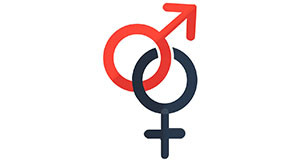“Gender: history, inequalities”: a set of book reviews published in Population, 2016-3 and 2016-4

Defined as “a hierarchically ordered bi-categorization of the sexes (men/women) and the values and representations associated with them (masculine/feminine)” (Bereni et al. 2012), gender is an increasingly high-profile subject in today’s academic world as well as in the media, politics, civil society and community organizations. In this context, it seemed to us that assembling a set of reviews of books on the subject was a good way of illustrating the current state of research on it.
With this in mind, we requested colleagues at INED and outside institutions to analyse a number of recent works, published from 2013 to 2016, that apply a historical, sociological and/or anthropological approach to gender. After reading the reviews we can only conclude that despite non-negligible advances over the decades, inequalities between men and women, within sex groups, and between sexualities are continuously redeveloping, across the life cycle and in the many different spaces of the social world.
A number of problem areas emerge. Some, such as family and work, constitute the pillars of gender studies and have been since this area of research came into existence in the 1970s. The reviews show how those issues and our view of them have evolved since then. Fanny Gallot’s study of women workers at the Chantelle and Moulinex companies echoes a founding study of the 1980s by Danièle Kergoat demonstrating that “ouvrière [female manual worker] is not the feminine form of ouvrier [male manual worker]”. Dorothée Dussy’s work, an anthropological study of incest that analyses how domination is constructed from a very young age, both belongs to and renews this tradition. A considerable number of other areas of investigation are represented in this set of reviews, attesting to the extension of gender studies and its strength in France and internationally. They include sexualities (the books reviewed discuss such subjects as contraception, homosexuality, and sexual violence); men and masculinity; health; age; political life and others.
Clearly, as with all selections, there are areas that have not been covered. Queer theory, disseminated in large part through the work of Judith Butler (translated into French in the 2000s) is not represented. Nor do the works analysed here focus on or follow the intersectional approach (direct, in-depth analysis of how the social power relations of gender, class, “race” combine to produce effects). Despite these limitations, however, it seems to us that this set of reviews fits perfectly with the research currently under way at INED’s “Demography, Gender and Society” research unit, organized around three major axes: “Homosexualities: knowledge and methods”; “Gender throughout the life cycle”; and “Violence and gender relations”.
Contact: Marion Maudet, Gaëlle Meslay, Alice Olivier and Anne Paillet
Online: April 2017.
